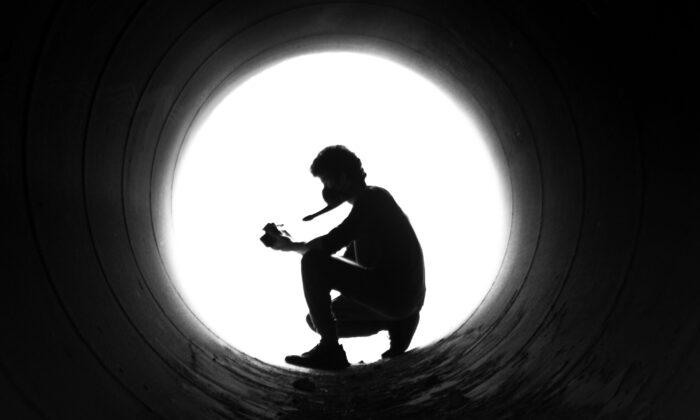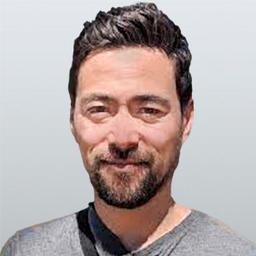On the morning of the last day of his life, Adam Rashid called his parents to tell them he was about to be discharged from Zuckerberg San Francisco General Hospital and Trauma Center. He had gone there the night before, just after being released from the county jail where he had been held for a month for failing to make a court appearance.
According to the doctor who interviewed him, Adam, a 25-year-old drug addict suffering from schizophrenia, said he didn’t have suicidal or homicidal thoughts but requested the anti-anxiety medication Klonopin. When the doctor told Adam they had no reason to keep him at the hospital, however, Adam changed his story, claiming to have access to guns and threatening to use them on his father and himself.
The doctor didn’t buy this new story. In his notes, he wrote that the claim “appears to be a method for getting care he desires, and not true intent/plan.” Later that day, near midnight, police found Adam’s dead body on a subway car—a fentanyl overdose.

A Palestinian-American raised in San Francisco who works as a caterer, Rashid, 59, talks about his son today in a plaintive tone, with a hard edge of bitter anger. He and his wife, Milany Salvatory, do not think their son had to die that night in September of 2019. They believe he was killed by the system he had turned to for help. They attribute Adam’s death to the negligence and indifference of people who should have known better—people who looked at his son and saw only a homeless person, unworthy of help—beginning with his discharge from San Francisco General.
But the reasons for Adam’s death may be both more prosaic and more damning than that. At two different hospitals, medical personnel could have made different decisions that may have saved Adam’s life that day. At the same time, it’s not clear that anyone made an obvious error in judgment, let alone violated a law. Adam’s death is a case study in the various factors that are driving the record number of drug deaths across the nation.
The easy availability of extremely potent illegal drugs, especially methamphetamine and fentanyl manufactured in China and Mexico and carried over the porous southern border, is overwhelming the capacity of law enforcement and health care systems. Given a lack of meaningful addiction care options for the thousands upon thousands of users who can’t afford private rehabilitation programs, and the absence of laws that would compel treatment for adults who don’t voluntarily make that choice, it is common for people who have just suffered a near-death experience to be put right back on their streets, alone and without support. “You just feel like you’re releasing people out into the ether and saying, ‘Good luck,’” said Emily Econie, a psychiatric nurse in San Diego.
A Cookie and Some Kool-Aid
Adam’s parents picked him up from San Francisco General that afternoon to take him back to their home in Oakland. Instead, Adam insisted on being let out of the car and dropped off downtown. He was acting paranoid, claiming that if he went home people would kill him (psychosis is an almost inevitable side effect of methamphetamine abuse). His father argued with him, but Adam was implacable, at one point attempting to jump out of the car while it was moving. After Adam threatened to leave for New York and take his younger brother, a 23-year-old who had used drugs with Adam before, Rashid gave in. The father gave his son $30 for food and dropped him at Yerba Buena Gardens, a few blocks from the Tenderloin, the downtown neighborhood where San Francisco’s homeless drug addicts congregate.About an hour later, Adam was found unconscious on the second floor of The Gap just a couple blocks from where he was dropped off, with a pipe and other drug paraphernalia scattered about him. A store employee called 911. San Francisco Fire Department paramedics arrived and managed to wake him up. Adam told them he had smoked fentanyl. The paramedics gave him oxygen, started an IV, and brought him by ambulance to Saint Francis Memorial Hospital. On the way, the paramedics kept having to wake him every few seconds, according to the incident report.
At Saint Francis, which is located just a few blocks from the Tenderloin, Adam was evaluated, given a cookie and some Kool-Aid, and discharged two and a half hours later.

Rashid is perplexed that the hospital did so little. He can’t understand how, after telling them he’d been smoking one of the deadliest drugs on the planet, Adam wasn’t at least monitored for a few hours. “There was, like, no vitals, no bloodwork done to see what’s in his blood,” said Rashid. “They’d done nothing for him.”
At 8:45 p.m., Adam called his father from the hospital and agreed to come home. He walked down to the Civic Center BART station and caught a train to the East Bay, but he never got off at his station in Oakland. Instead, he nodded off and rode it to the end of the line, Antioch, and then back again to the opposite terminal, Millbrae. There, at about midnight, BART Police found his body, according to the police report, “not breathing, foaming from the mouth, and purple in the face.” Blood was trickling from his mouth. He was still wearing his hospital wrist band. Paramedics tried to resuscitate him but were unsuccessful, and he was declared dead a few minutes before 1 a.m.
Rashid believes that multiple people and agencies failed his son that day. The first was the doctor at San Francisco General Hospital who discharged Adam in spite of his expressions of homicidal or suicidal intent. Next were the paramedics who did not administer naloxone, or Narcan, a drug that reverses the effects of opiates and revives people from overdoses. Then there was the physician at Saint Francis, who released Adam following what his father believes was a recklessly cursory evaluation. And finally, there’s Bay Area Rapid Transit, whose security systems are apparently so ineffective that you can overdose on a train and ride it to the end of the line and back again without anyone even noticing.
“He was trying to seek help,” Rashid explained. “But the system that he was seeking help ultimately killed him.”
Still, there’s no question that the system failed Adam. And apart from the decisions made by those who interacted with Adam that September day is a larger systemic problem in California. Even as California has been overrun by the addiction crisis, medical workers have few options. “We have no place to send” people like Adam, said Blue Stohr, a psychiatric social worker at a hospital in Los Angeles County. This is true even for patients who express a desire to quit using. “There’s nowhere to send them for treatment,” Stohr told RealClearInvestigations. “We’re stuck just babysitting patients.”
“The system, as it currently exists, as it relates to addiction and mental illness, is a nightmare,” said Rick Ramirez, a retired Los Angeles firefighter. “It keeps snowballing. Enabling people to do what they’re doing, and the lack of a system to help them—in my opinion that’s why you’re seeing this explosion of people on the street.”
In San Francisco, a fentanyl addict who wants it can get a bed in a rehab center within 24 hours, but only after being put on methadone or suboxone, which often takes repeated visits to a methadone clinic because they’re too understaffed to intake everyone who needs it. (Today, many hospitals administer suboxone themselves, but that wasn’t the case when Adam died in 2019.) Alternatively, a hospital could admit the patient and detox them there. But in California, the next step—placing them in long-term addiction care—can take weeks. By that time, the patient is typically itching to leave the hospital, which usually means being back on the streets.
“It’s a waiting game,” said Stohr. “And by the time the person is ready to get placed, they don’t want to stay any longer because it’s now going into their 15th, 16th, 17th, 18th day of treatment. By then they’re done. They’re wrapped up, ready to go, nice and clean, showered, going to groups, eating, gained some weight, feeling good.”
“I had a young woman, using intravenous fentanyl and meth,” Dr. Roneet Lev, an addiction medicine doctor in San Diego, told RCI. “She was saved by her boyfriend with naloxone, and she wanted treatment. We could not get her an appointment for two weeks. There were no beds available. We do not have the capacity for people who want to get care.”
‘Everything We Do Is Nonsense’
These are extreme cases. They’re far from typical of the countless addicts who cycle in and out of hospital emergency rooms every day. “I’ve got people who have been to the ER 30 times in the last year,” Emily Econie, the psychiatric nurse in San Diego, said. “This is our emergency department alone. You have to remember these people are using every emergency department in the county.”Most of those patients are more like Adam: They don’t need the level of intensive psychiatric oversight that a 14-day or a 30-day hold entails. If they’re looking for help, what they need is much simpler: a residential facility where they can detox and recover. But those are in disgracefully short supply.
Building those facilities, however, isn’t enough.
At Saint Francis, hospital records show, Adam had a fleeting moment of clarity during which he seemed open to quitting drugs, just as he had earlier that day at San Francisco General. He told the attending physician that he was interested in information about detoxifying. Since it was after hours, he wasn’t provided with a social worker, but was given some printouts about how to get placed into a detox facility. In a functional addiction care system, he would have been placed into a detox facility that same night.
But even then, a system that depends upon addicts having an epiphany and then sticking with treatment would help only a tiny fraction of the addicts who need it. It’s the nature of addiction that those who are dying from it fight to avoid everyone and everything that could save them. In most cases, experts and recovered addicts have told RCI, they have to be forced into life-saving care.
A firefighter in Southern California who insisted on anonymity because his boss had not authorized him to speak, told RCI that the first thing he and his colleagues do when they approach someone passed out from a drug overdose is to remove the person’s backpack, or whatever else the belongings are held in, from the patient’s reach before trying to revive the person. “If you think these people are living on the streets without carrying weapons, you’re naive,” he said. Naloxone is an opioid antagonist, meaning that it binds to opioid receptors in the brain, immediately blocking the effects of whatever opiate the user consumed. By doing so, it restores breathing, but it also throws patients into instant withdrawal. They wake up angry, miserable, and dopesick, “sometimes puking on you,” and often violent.
The firefighter reported that, without exception, the revived user curses out the people who just saved his or her life. Once fully revived, overdose patients almost never agree to go to the hospital, as their first and only priority in that moment of sudden withdrawal is to get their high back. They sign an “Against Medical Advice” release and storm off, usually to commit some petty crime to raise the money to buy more drugs. If they’re given Narcan in the ambulance, they’ll often run away as soon as the vehicle pulls into the ER and they’re taken off the gurney. To avoid this, some EMTs will administer only enough Narcan to restore patients’ heart rates, leaving them high and unconscious so they can get them to the hospital, where they’ll be stabilized and, inevitably, released back onto the streets.
“Everything we do is nonsense,” the firefighter said.
This was the broken system that sustained Adam’s addiction year after year. As the families of addicts can understand, Rashid and his wife knew how unlikely it was their son would get treatment without it being forced onto him. “When Adam was arrested, his mom was always at the courthouse and she would plead, you know, for the judge to incarcerate him and put him in a program,” Rashid told RCI. “But it never happened. They’d always release him, and it was just like a revolving door.”
It’s a refrain voiced over and over again by parents of addicts: They have the surreal experience of praying every day for their children to be arrested and imprisoned, because freedom is a death sentence. One mother in Washington State said she used to call the morgue in Eugene, Oregon, where her son is currently living on the streets, dreading that they would find a match for his name. To this day, she checks for his name at the county jail, praying that they will find a match.
Lisa Ragan, a mother in Massachusetts, expressed shock at what it takes to be imprisoned in California. Last year she went to San Francisco to visit her son Collin, who at 32 is addicted to meth. When she tried to get him to go to rehab, he barricaded himself in a hotel room until the police arrived.
“I begged the officers—he was telling me he was God and he could walk through walls and all this stuff—and I said, I need to [involuntarily commit] him … And they said, ‘Well, we don’t really do that in the way that you think.’ And I said: ‘Well, he’s going to do something again if you let him out. He’s not well.’”
Even though her son had meth on him, the police released him. The next day, he broke into a church in Marin, put on a clerical robe—“because he thinks he’s God and everything”—wandered outside, and fell asleep under a bush. He was arrested and sent to a halfway house in San Francisco, which he simply walked out of. According to his mother, nobody at the halfway house even contacted the police or his public defender to tell them he had gone missing. Her son then bought meth, rented a car, and drove to Arizona, before flying back and checking himself back into the halfway house. The halfway house then told the judge he had successfully completed the program. Since then he’s been arrested six more times within a single year, including for a DUI with meth on him and for threatening to kill his landlord. He’s currently holed up in a house in Sonoma County, smoking meth, with a bench warrant out for skipping court.
This is the situation in California today, and it’s what Adam’s family was up against in their desperate efforts to save his life. Rashid is not wrong that the medical system in San Francisco failed his son. But the failure was not one of a few individuals making bad choices. The medical professionals who saw Adam that day did exactly what was expected of them, given the paucity of tools at their disposal. The failure was systemic: California simply lacks the social infrastructure to do anything more than watch helplessly as the problems of addiction, homelessness, and untreated mental illness inundate cities and suburbs and destroy the lives of thousands of addicts and their families. And it seems that everyone involved in the system, from EMTs to psych nurses to ER doctors, knows this to be the case.
“I don’t know if I have a solution,” said Emily Econie, “but I definitely don’t feel like I’m part of it.”




